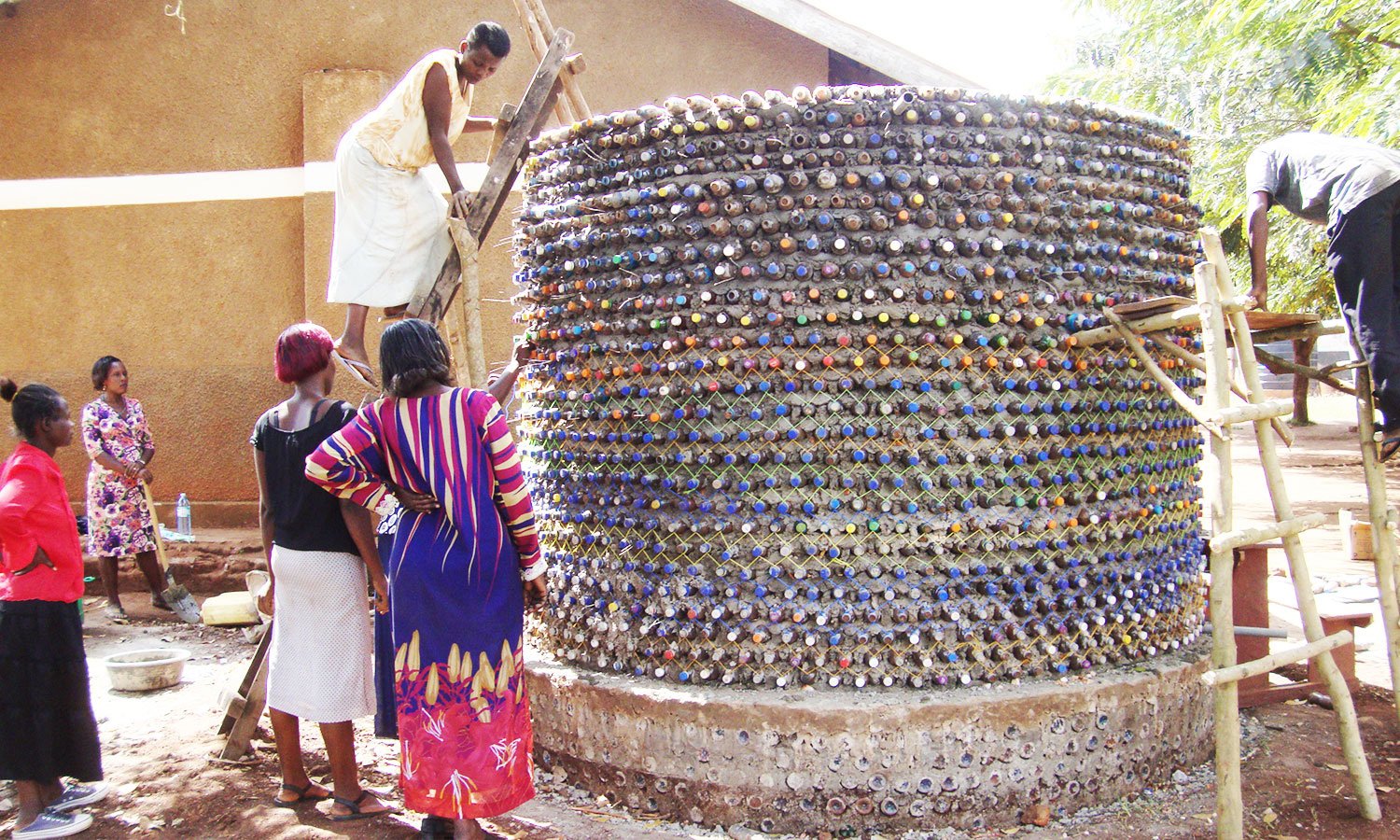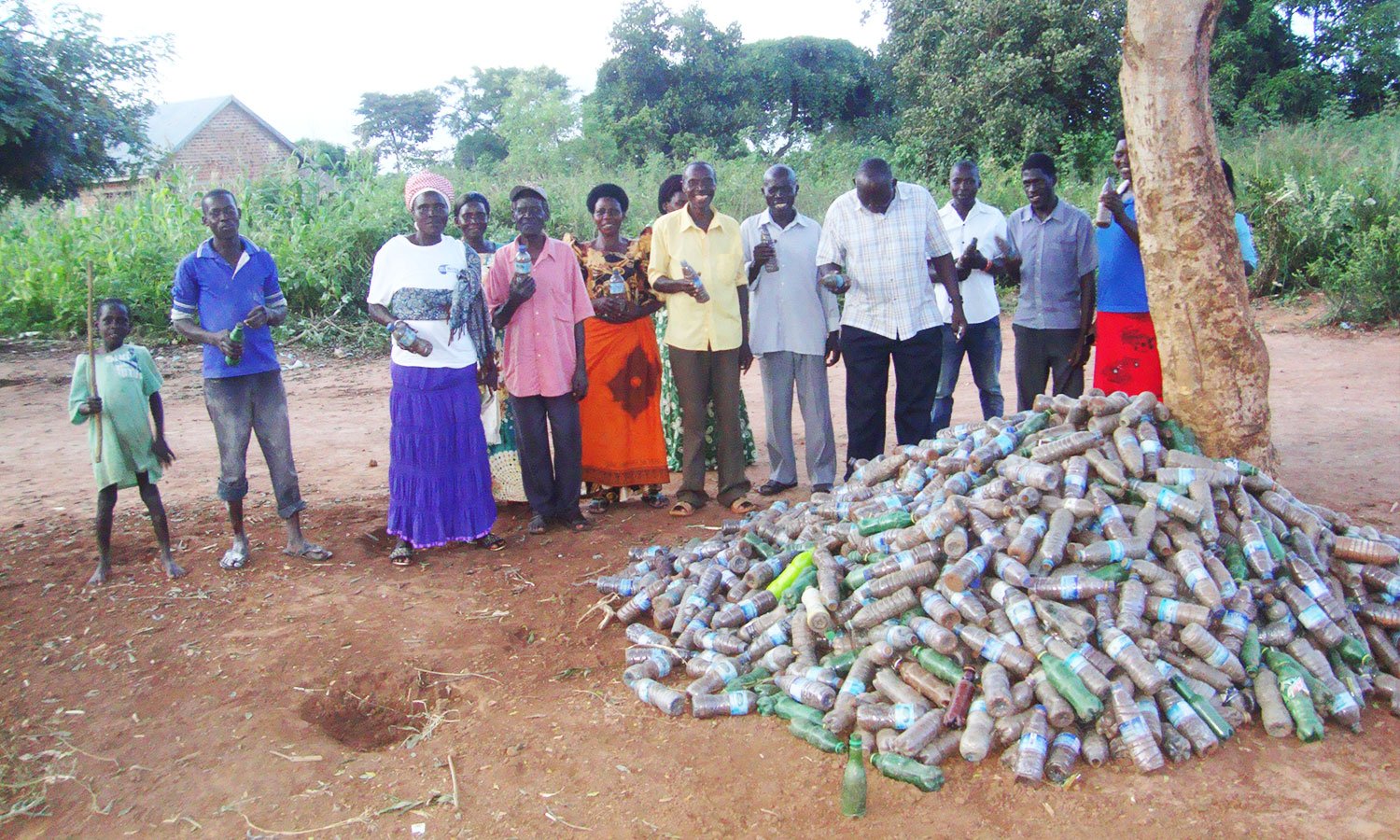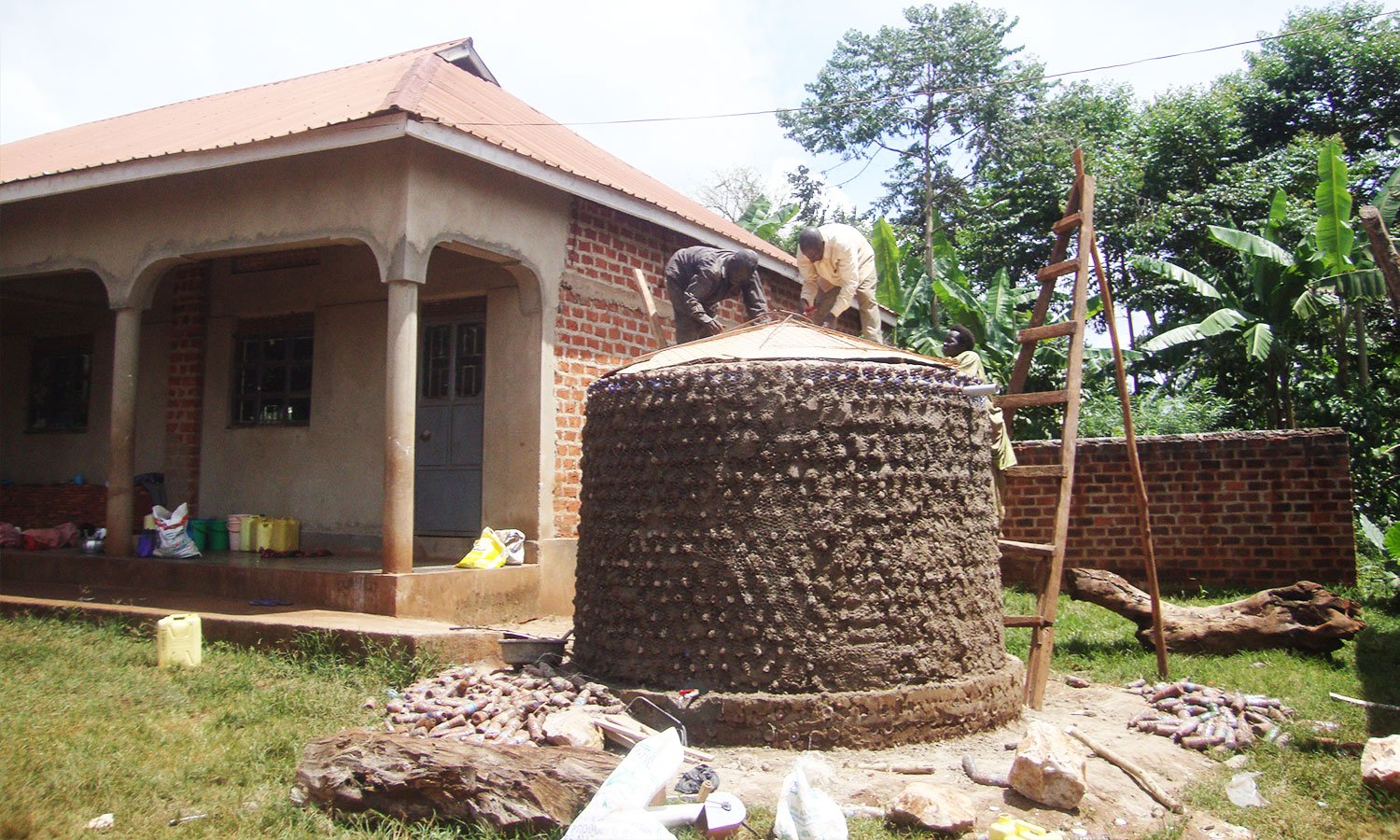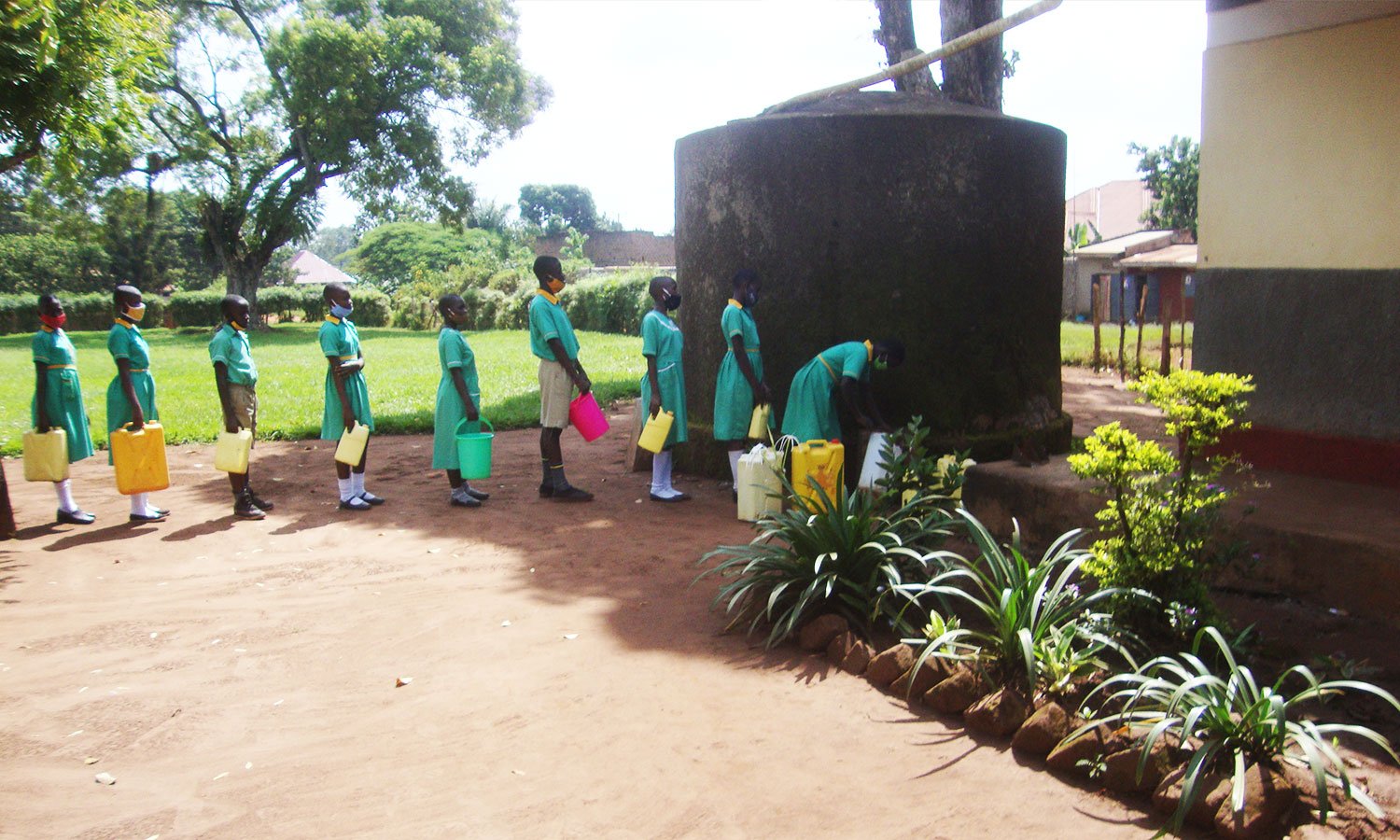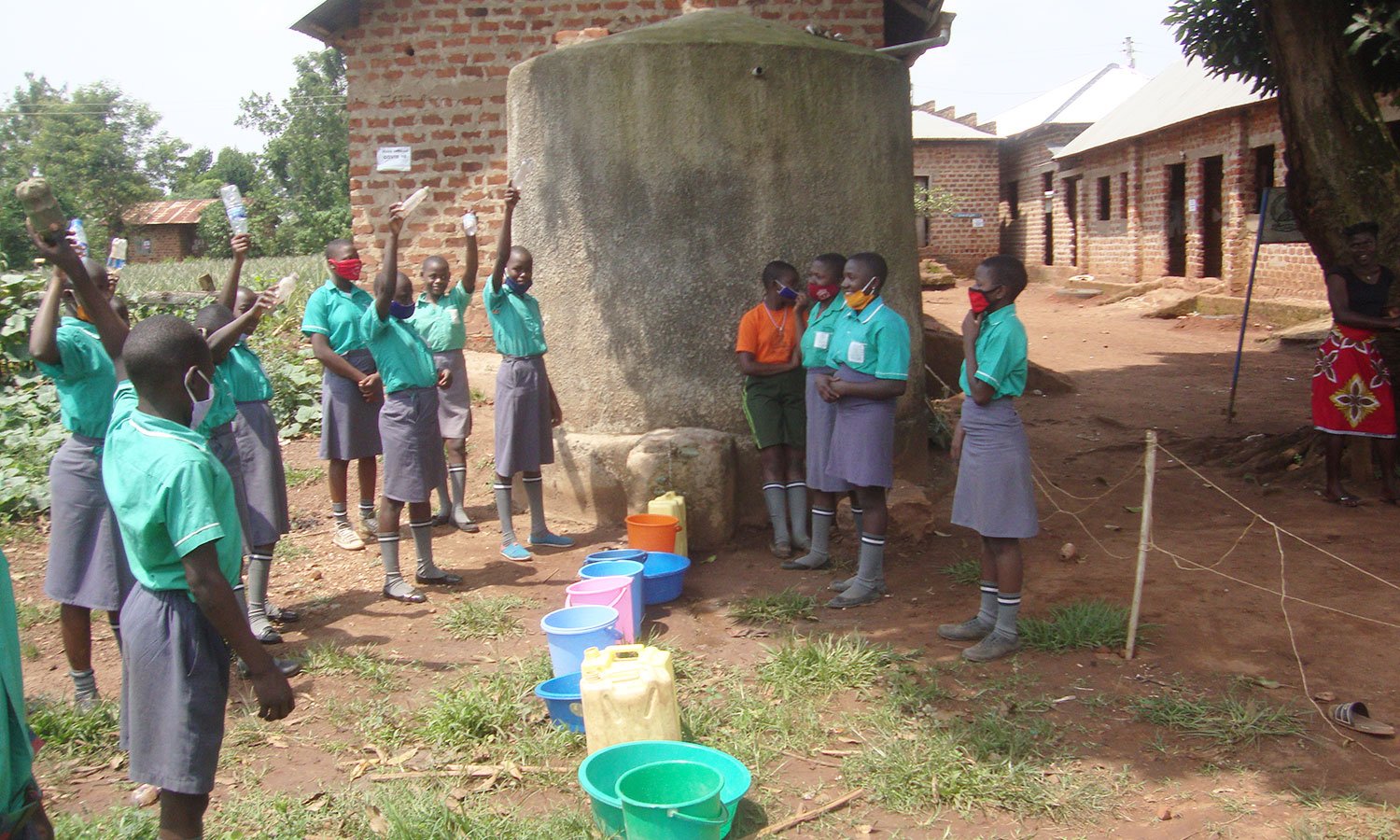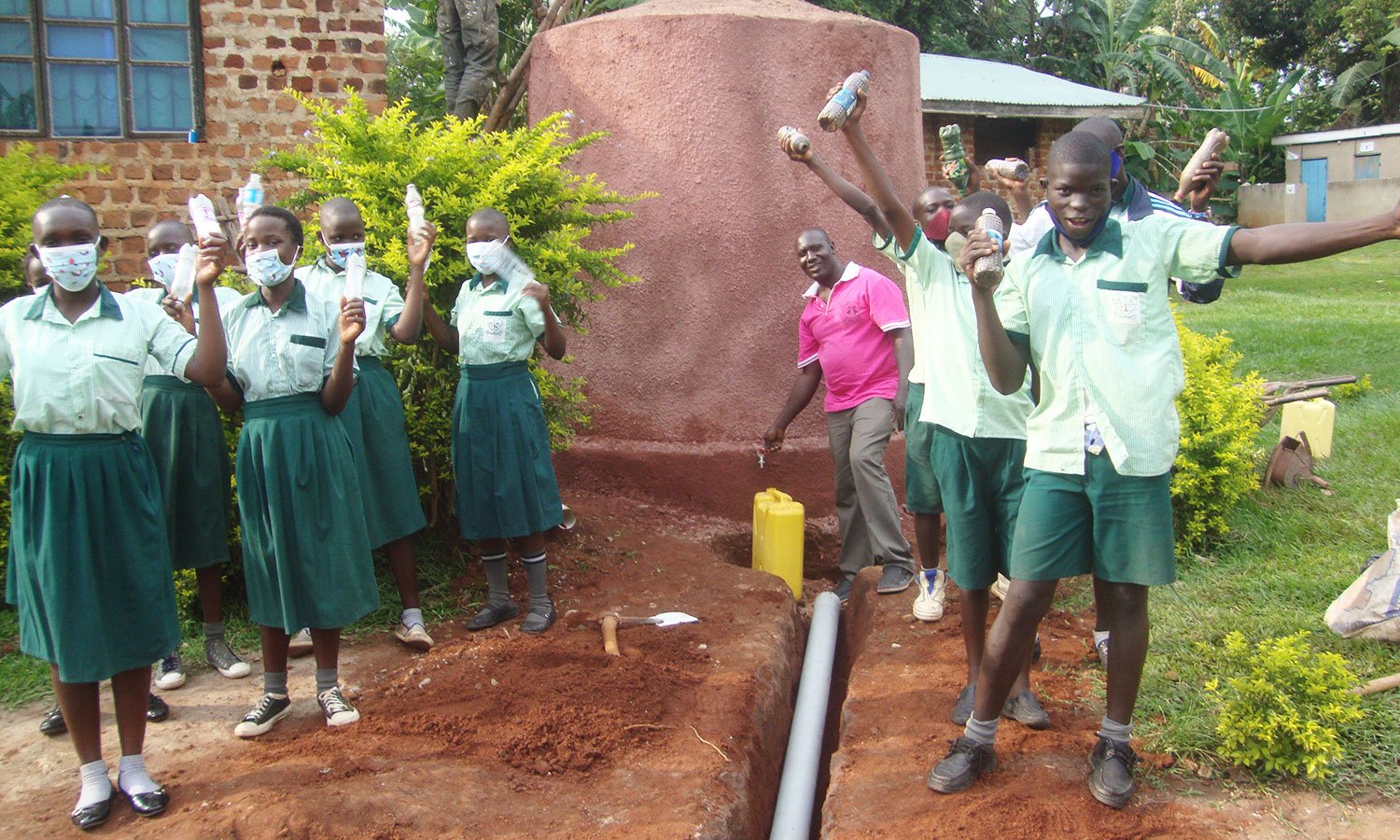Bottle Brick Water Tanks Bring Water and Work
Written by TGE Volunteer, Barbara Kohn
“One man’s trash is another one’s treasure”
Whoever said this must know about bottle bricks. They are disposable plastic mineral bottles stuffed with dry soil until they are compact as bricks. They provide a simple and accessible material for building houses, school buildings and now water tanks.
Last year, TGE sponsored a program under the Butakoola Village Association for Development (BUVAD), a registered Uganda non-profit, to build 10 bottle brick water tanks at 10 schools in the Kayunga District to address the daily challenges locals face in getting water. The sustainable cylindrical rainwater catchment tanks can hold 10,000 liters of rainfall or water delivered by a water company during the dry season, if necessary.
Hauling Water Is Difficult and Dangerous
Most of the existent water sources in the Kayunga District are rivers and streams in isolated thick bushy areas, which are far away from homes and schools. Water quality is often unhealthy, too, because of solid waste, living organisms like maggots, tadpoles and other pests, and animal waste. Water sources often are shared with cattle and goats. In a survey conducted by TGE, 20 percent of students in the district reported having suffered an upset stomach or diarrhea over the preceding month.
To get to water sources, many women and children walk long distances carrying tanks or jugs. The journey can be dangerous. It is common for women to be raped or children kidnapped while they walk. Children have been knocked down by speeding passenger carriers (motorcycles commonly known as boda bodas) or suffered snake bites because they do not wear shoes. Some slip and fall into the water and drown.
Gathering water also impacts education. 94 percent of the students who participated in a TGE survey about the project (more results available later) said that they are responsible for collecting water for their family/household. Depending on how far they live from water sources, some school children have to miss lessons to search for water.
COVID 19 made the water situation worse. Equally distant public water sources were overwhelmed by the community searching for clean water for handwashing.
Bottle Brick Water Tanks Bring Water and Work
The construction of the 10 TGE funded water tanks has had a far-reaching impact. The water is collected and used as it flows into each tank. It is estimated that each school uses 1500 liters of water daily. Of the tanks, one student Margret said, “We now collect 800 liters of water at school when it rains. We no longer walk to the well. The long-distance to the well was solved by a plastic mineral water bottle. The moral of the story: Waste is useful – if recycled.”
Access to water has increased school attendance rates and improved hygiene during the pandemic. Furthermore, BUVAD has enthusiastically agreed to TGE's proposal of selling the surplus of water makes this an income-generating program. They estimate a monthly revenue of up to 280 USD.
More Bottles “in the Tank”
Based on the success of the first phase of the program, TGE has agreed to support the construction of another 10 water tanks at another 10 schools in Uganda this year. Construction currently is underway.
Each tank costs $685 to build. If you are able to donate towards this effort, more information is available here.

